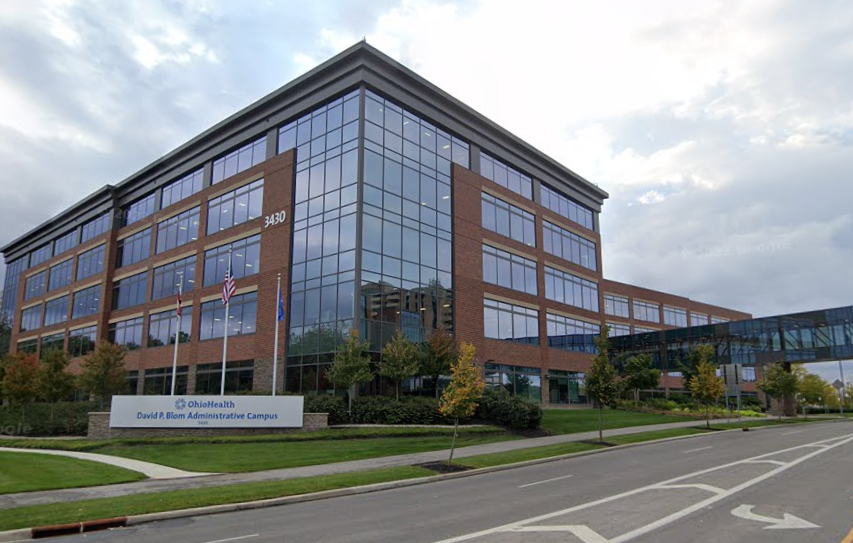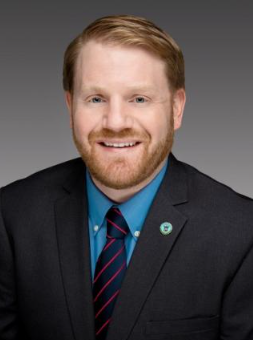Columbus City Council health care debt-relief program on track for April vote

Who gets financial help with medical debt under a proposed city of Columbus relief program will be out of the hands of residents and even the city officials planning to use $2 million in federal COVID-relief funds to attempt to wipe out up to $200 million in lower-income residents' outstanding medical debt.
There's not even a form or application that residents with medical debt must fill out, according to information at a public hearing Monday night at City Hall held to go over details of the program.
Instead, the decision to resolve medical debt would rest in the hands of the Columbus-area's major health care providers, including hospital systems and physician groups, which must volunteer "portfolios" of former patients with outstanding debt to RIP Medical Debt, a national nonprofit that the city intends to hire next month.
Then, if health care providers accept an offer from RIP to purchase all or part of the debt from them, residents would simply receive a letter — maybe as soon as August or September if all goes to plan — notifying them that their medical debt had been wiped clean with that provider.
"The big threshold is just getting (providers) to a 'yes,' are you willing to send us a portfolio to be assessed?" Keith Hearle, a special adviser to RIP Medical Debt focusing on government relief initiatives, said in a telephone interview with The Dispatch after the meeting.
Asked if health care providers have shown any patterns such as wanting to sell small amounts of debt rather than large amounts, Hearle said they hadn't discriminated. Rather, most have chosen to get rid of all debt in a certain date range, such as those between 18 months and seven years old or those less likely to ever be settled, he said.
But some providers simply choose not to participate, Hearle said, often because it can be an administrative burden pulling together all the needed information. RIP Medical Debt doesn't disclose which hospitals or healthcare groups participate and which don't, he said.
City officials are hoping all local health care providers will participate because the burden of unpaid health bills can weigh families down, causing them to forego future doctor visits for themselves and their children out of fear of digging a deeper hole. Black families are more likely to have burdensome medical debt than white families, officials said.
"And certainly we've been trying to facilitate some discussions between the parties," Council President Pro Tem Rob Dorans said after the hearing, during which no members of the public testified in person or via video link.
"I think we want to make sure we're in a position, when and if this comes to a vote, that it's going to be a seamless process," Dorans said of the city council. The proposal is currently on track for an April vote.

"...How many folks forgo going to the hospital or going to the doctor because they have medical debt hanging over their head?" Dorans asked, noting that his parents had no health care when he was born and the financial stress was "something that my family carried really from my first days of life."
"Here we are in 2023, rather than the '80s, and this is the same issue."
Even people with health care plans can have unresolved debt, particularly those who have opted into "catastrophic" policies that only kick in after reaching a certain threshold, Dorans said.
Or, Hearle said, those who are making over 200% of federal poverty guidelines may end up with an expensive partial bill they can't afford to pay.
Once RIP has a health providers' submitted database of debtors, it attempts to merge that information with family income data from consumer credit reporting firm TransUnion, which provides it estimates of the minimum household incomes and family sizes of those with the debt.
Columbus residents would qualify if they earn at or below 400% of the poverty line, which is $54,360 for a one-person household and up to $111,000 for a four-person household. They also qualify if their debt is 5% or more of their income, regardless of poverty status.
If a hospital has already written off debt as "charity care," RIP won't pay to buy it, Hearle said.
Some states, including Pennsylvania and New York, have taken a statewide approach rather than city- or county-level approach in Ohio to working with RIP on debt relief packages, which can help facilitate the process since states can set policies over charity care and licensing requirements, Hearle said.
"We know at some point we're going to have to figure out how these city and county efforts intersect with state efforts," Hearle said. While some Ohio lawmakers are examining the program, he said, "who knows where the state will land."
If the Columbus project is successful at using $2 million in removing $200 million in debt from low-income city residents or those with large bills compared to their incomes, hospitals would be in effect settling not even for pennies on the dollar, but a single penny on the dollar — the target that allows nonprofit RIP Medical Debt to leverage its funding by 100 to 1.
But, Hearle said, that won't necessarily answer the question: How much of the local medical debt problem just got solved, and how much remains on the books?
Worthington Presbyterian Church in December 2019 donated $15,000 to RIP Medical Debt in an effort to help pay off medical bills with debt collectors for needy Worthington residents as a Christmas gift.
In what seemed more like a Christmas miracle, the church later learned from RIP that its donation ultimately paid off $3.8 million in medical debt for 2,942 individuals and families in Franklin and 14 other Ohio counties — more than twice the originally estimated payoff amount and families served.
wbush@gannett.com
@ReporterBush
This article originally appeared on The Columbus Dispatch: Health care debt relief could be a crapshoot, with hospitals in charge

